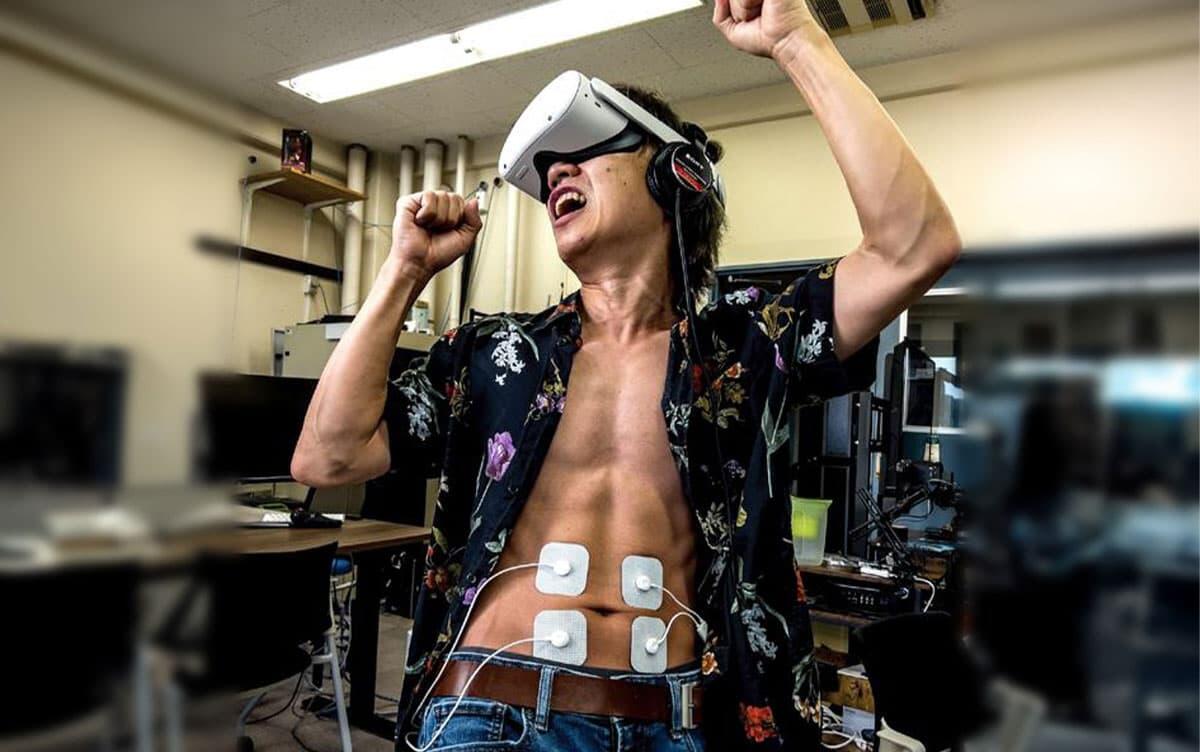Research News
Silent Deep Bass: Wearable Audio You Can Feel

Researchers at University of Tsukuba have developed a portable, silent subwoofer that combines electrical muscle stimulation with low-frequency vibrations. This device enables users to physically feel deep bass in virtual reality (VR) and everyday music. While minimizing noise, it provides an immersive experience and rhythm perception comparable to conventional speakers, opening new possibilities for audio experiences.
Tsukuba, Japan—As VR and online live streaming continue to grow in popularity, demand for realistic bass experiences at home is increasing. In response, technologies that integrate sound with vibration and physical sensation have been advancing rapidly. The research team designed a compact, silent subwoofer system that emphasizes low frequencies by combining electrical muscle stimulation (EMS), which induces muscle contractions via weak electrical currents, with low-frequency vibrations.
This system allows users to experience low-frequency sound in VR environments without external speakers. To evaluate its effectiveness, experiments were conducted with 24 participants. EMS intensity was preset to a comfortable and perceptible level, after which participants wore head-mounted displays and headphones to experience VR live content.
The results showed that the system reproduced rhythm and depth comparable to traditional speakers and subwoofers, while significantly reducing ambient noise. Moreover, participants who had adapted to EMS reported a more natural and enhanced sense of immersion.
These findings suggest that the technology can enrich entertainment experiences, including VR live events and everyday music listening.
###
This work was supported in part by the Japan Society for the Promotion of Science (JSPS) KAKENHI under Grant 24H00892.
Original Paper
- Title of original paper:
- Myoelectric Stimulation Silent Subwoofer Which Presents the Deep Bass-Induced Body-Sensory Acoustic Sensation
- Journal:
- IEEE Access
- DOI:
- 10.1109/ACCESS.2025.3565283
Correspondence
Associate Professor ZEMPO Keiichi
Institute of Systems and Information Engineering, University of Tsukuba
Related Link
Institute of Systems and Information Engineering



